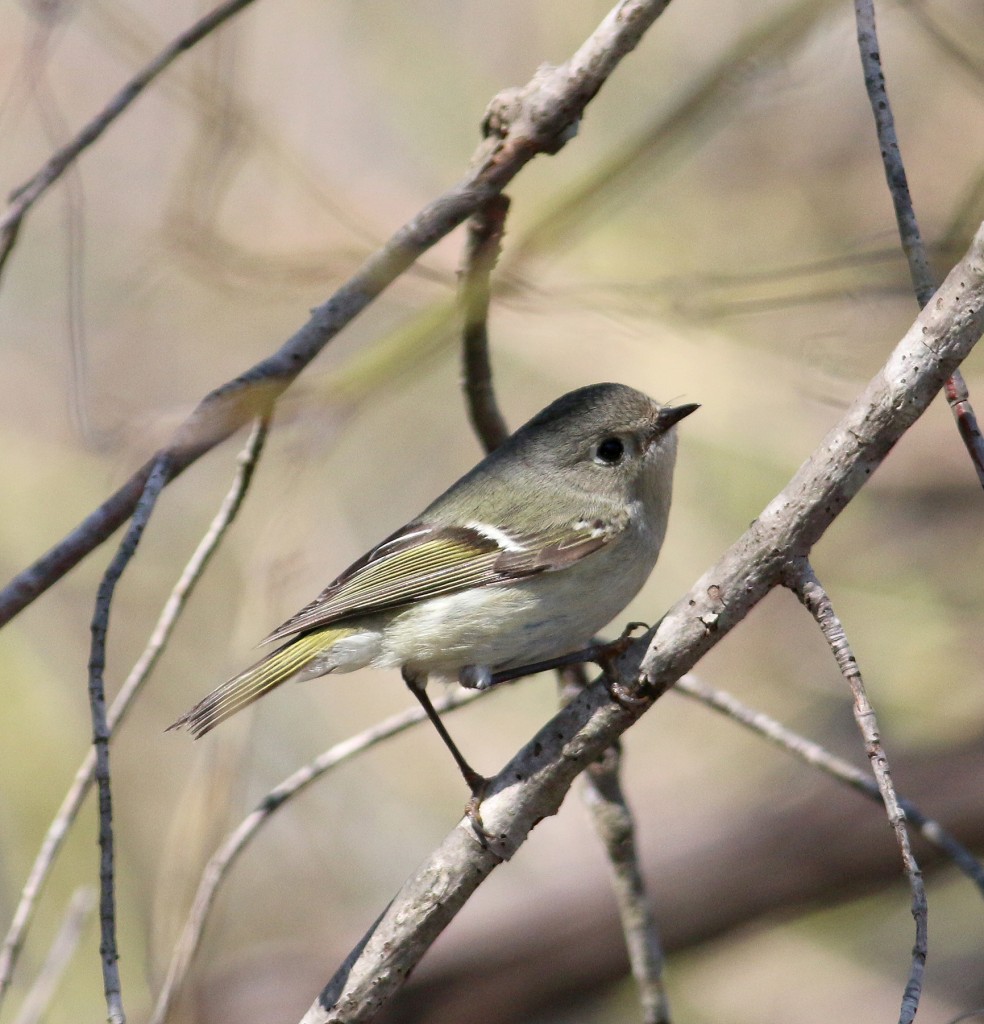
Here we have a small mostly-gray songbird. Can you identify it confidently?
Click here for the answer.

Here we have a small mostly-gray songbird. Can you identify it confidently?
Click here for the answer.
Its been a rough winter up here in the northeast, with more snow than many of us have seen in decades (or want to see again), iced-up ponds and bays leaving very little open water, and thermometers that seem to be stuck on the cold end of the scale. So we’ve all been waiting anxiously for signs of spring. Those signs have been arriving slowly but surely. It started with the arrival of the first Laughing Gulls.
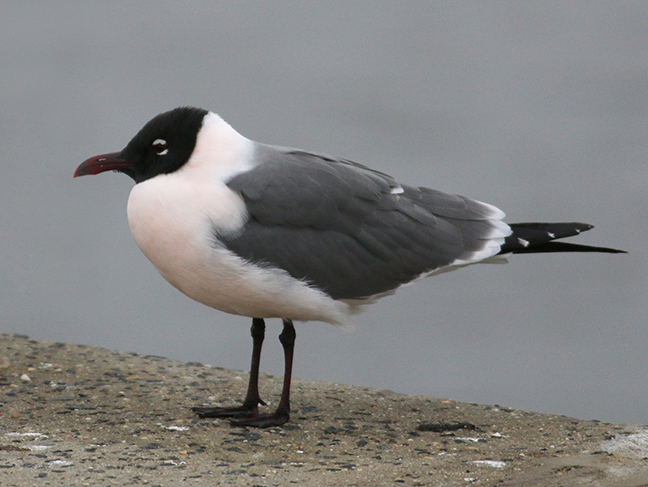
My first-of-season Laughing Gull. Notice the rosy-pink hue to this bird. I’m not sure what causes that color. Does anybody out there know??
Eastern Phoebes are becoming a daily occurrence. I’ve been seeing Ospreys both on the bays and larger ponds. American Woodcock are performing their delightful twilight displays. A few Tree Swallows are flying above the ponds and bogs. Wood Ducks remain shy, but pairs are back in their finest plumage.
Today there was a clue that maybe we’ve reached a turning point. Out on the bogs, the air was chock full of tiny flying insects, presumably midges.
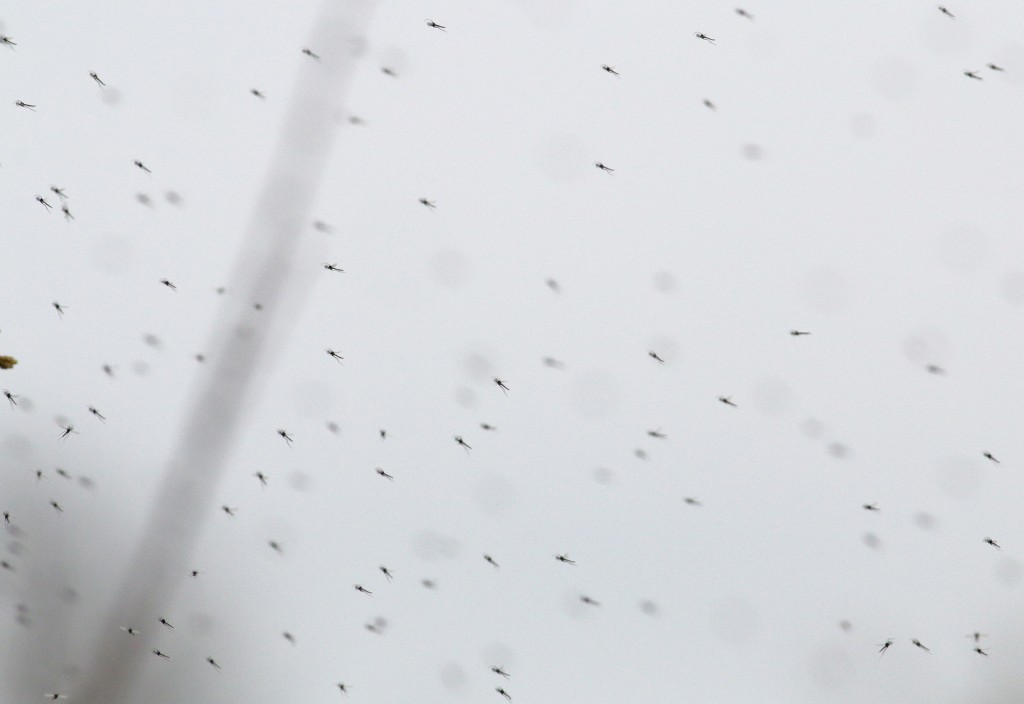
At times all I had to do was aim the camera in any direction, and the frame was filled with midges. The birds were loving it.
And if tiny flying insects are appearing, hungry birds can’t be far away. It didn’t take long to find them. Before today I had seen a grand total of only 9 Tree Swallows. Today the bogs were filled with hundreds of these graceful fliers. I had not seen any Pine Warblers yet this year, but today with just an hour of viewing there were dozens feeding in front of me, seemingly not knowing where to feed first. Let’s collectively hope that we’ve reached the turning point as we await the next wave of arrivals.
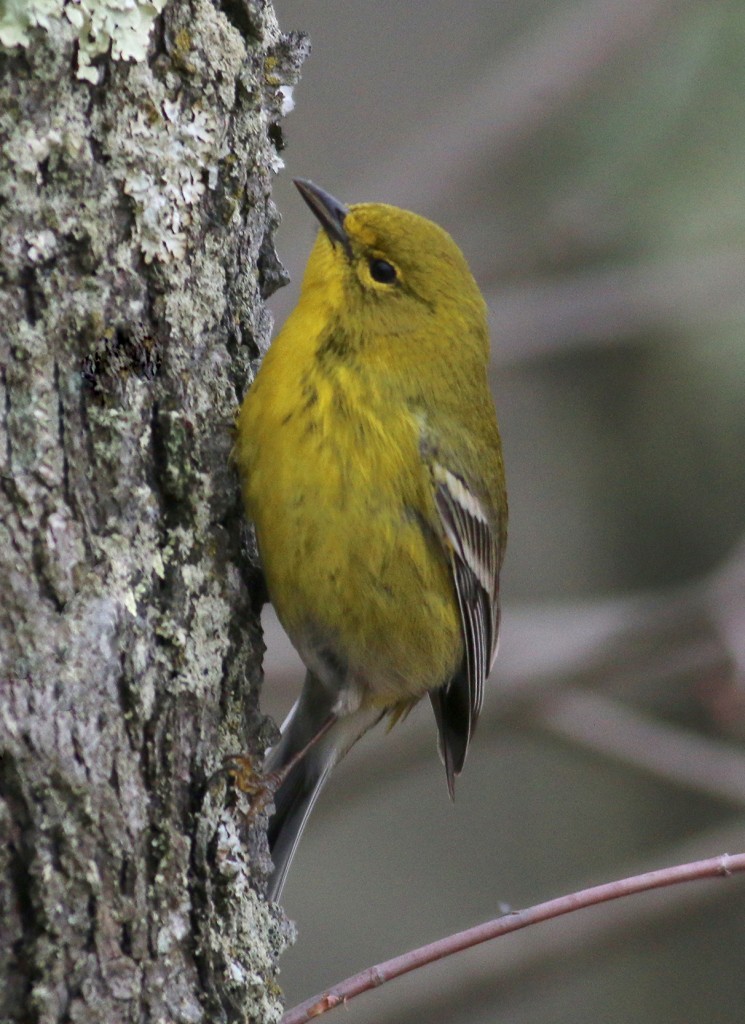
My first bright Pine Warbler of the season. There were dozens flitting about and feasting on the midge hatch today. It’s hard to describe how much that flash of yellow brightened up my day.
The temperatures were finally up in the high 50’s today, but the winds were over 20 mph. One thing I’ve learned over the years is that there is nothing that will cause a slow birding day quite like high winds. Birds (and birders) will tolerate low temperatures, high temperatures, and drizzle, but not high winds. So I tried to get something positive out of the day by exploring what condition the roads were in at Whitesbog and to see if the Tundra Swans have returned to the thawed bogs. Indeed, I was happy to see 56 Tundra Swans mixed in with the Canada Geese.
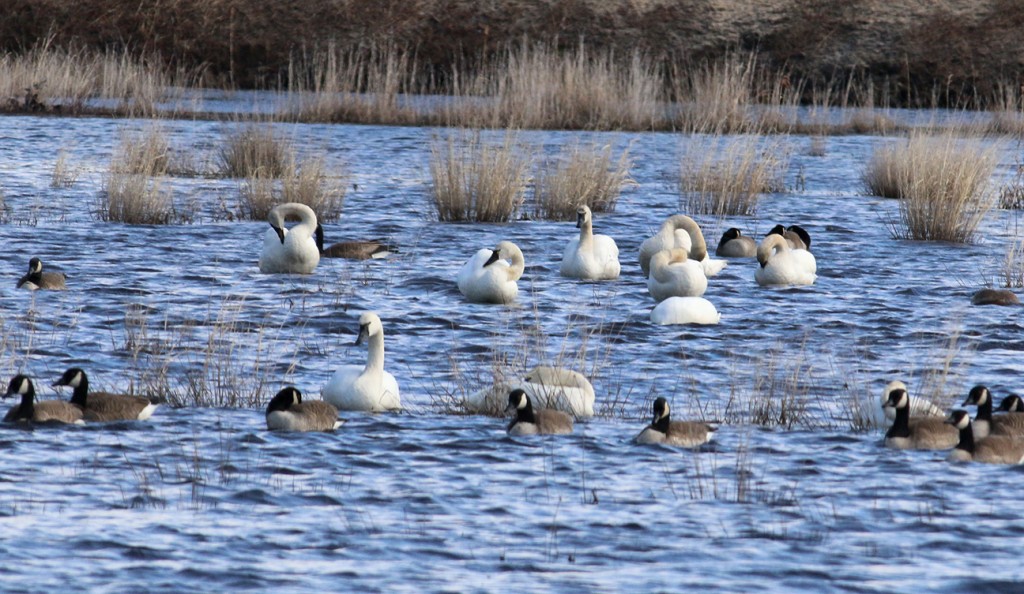 As I walked around the bogs, I was happy to find a few new first-of-year species. First there was a Pied-billed Grebe…nice. Then nine Tree Swallows…nice. Then there was a grebe with lots of yellow on its face. WHOA! What was that?
As I walked around the bogs, I was happy to find a few new first-of-year species. First there was a Pied-billed Grebe…nice. Then nine Tree Swallows…nice. Then there was a grebe with lots of yellow on its face. WHOA! What was that?
A quick look through the scope confirmed that it was a Horned Grebe, a species that I have never seen at this location. Then another one appeared, although this time in more typical winter plumage.
Then yet another was spotted along the shoreline, this time transitioning into breeding plumage, with a little white remaining on the cheek and throat, and especially on the back of the neck.
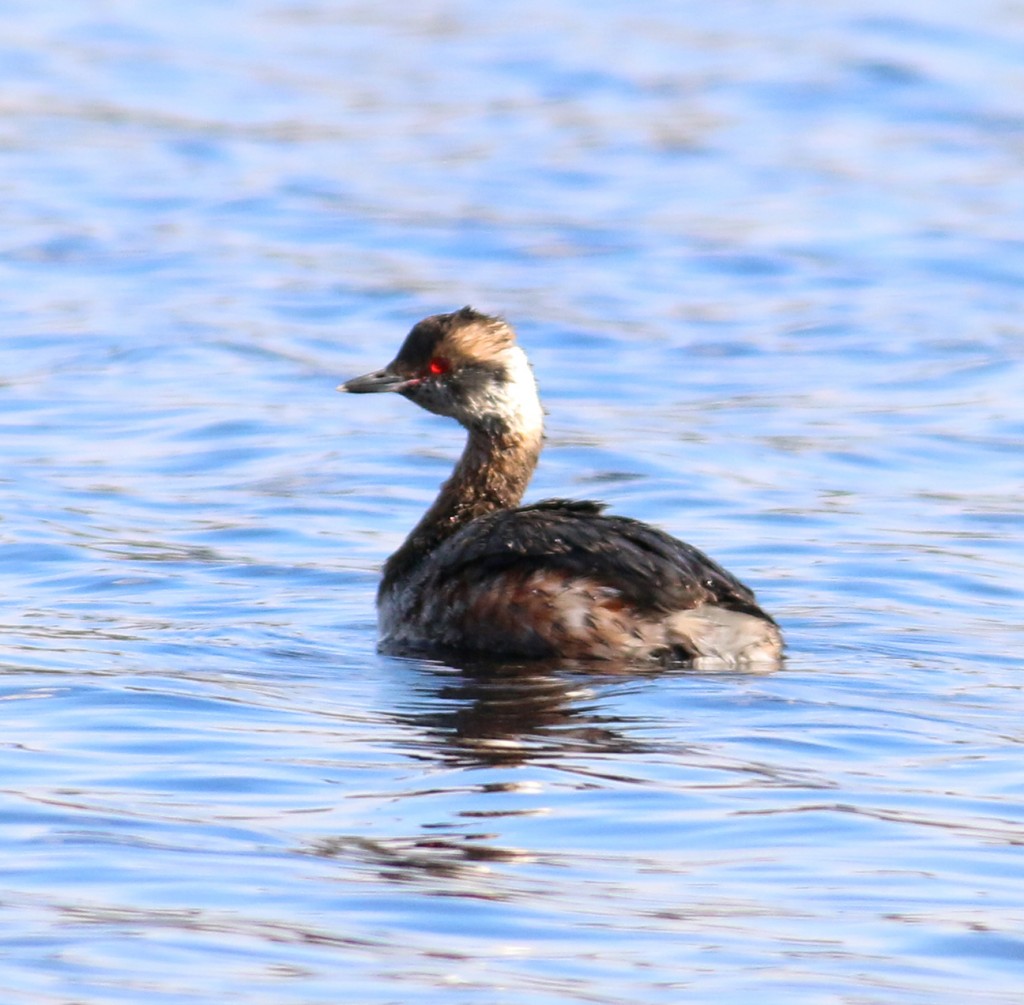
As if seeing side-by-side breeding and winter plumaged birds wasn’t enough, this third bird was beginning the transition into breeding plumage, making a great three-bird comparison.
I spent close to an hour watching these three birds feeding in the pool in front of me, with the full range of plumage side-by-side.
For the record, Horned Grebes are fairly common along the immediate coast in winter, both in the ocean and in Barnegat Bay, but Whitesbog is 22 miles from the ocean, and that makes a big difference. After asking others who have more experience birding in Whitesbog and checking eBird records, it turns out that it is quite uncommon to find Horned Grebe inland here in NJ. There are no previous eBird records for Horned Grebe in Whitesbog. Until today. Not bad for a windy day.
A new Pop BirdQuiz for today; a photo from New Jersey in December.
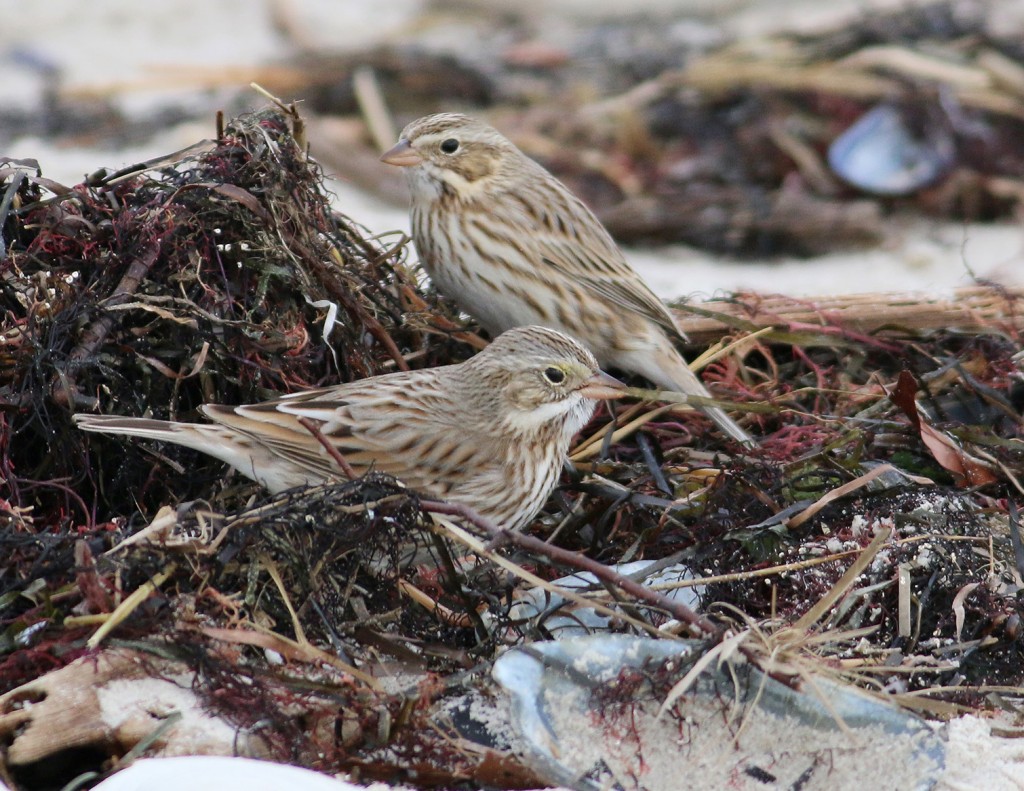
What have we here? Its a pair of ________.
Click here for the answer.
This was the week I was waiting for. But first here’s a little background. Eleven years ago I went on an amazing trip to Alaska, where I took great photos of Mt. McKinley, my first-ever salmon, breaching Humpback Whales, and a series of birds that I do not expect to ever see again unless I travel back to Alaska. When I came back home all of those photos were stolen. (I know…awwww) One of the birds that was in that collection was Bohemian Waxwing, a bird that is actually possible to see here in NJ, but only rarely. In fact, the NJ Birds Records Committee only lists 16 accepted records since 1962. But this month they were being sighted on Long Island, then at Sandy Hook in northern NJ. I figured that within a week they would head further down the coast, most likely appearing at nearby Island Beach State Park. This was going to be my week to photograph this bird again.
Today brought winds from the northeast, so the window of opportunity was open. I headed to Island Beach despite light snow and the uncomfortable combination of 25 degree temperature and 15 mph winds. The strategy was to drive the main road slowly or walk some of the trails, looking for Cedar Waxwing or Robin flocks, hoping that a Bohemian would be mixed in. The first sighting of the day was a familiar face at IBSP, one of the resident Red Foxes, following me down the Reed’s Road trail.
The birds were mostly hunkered down due to the wind and the cold, so any sightings were welcomed. I stopped and waited when I located decent Robin flocks at lots 3, 11, and 14, and occasionally found a few Ceder Waxwings mixed in, but alas, no Bohemians.

Cedar Waxwing, frontal view. Note the white undertail coverts and yellow belly that distinguish them from Bohemian Waxwing.
After driving the 8.3 miles of the main road, then all the way back I was about to give up, but summoning up all the optimism (or desperation) of a determined birder, I decided to try the same strategy again. I drove back out, focusing on lots 3, 11, and 14, then turned around and again stopped by 14, 11, and then 3. When I reached lot 3 again, I saw a photographer, Kevin Knutsen, aiming a big lens into a tree as he called out ‘Bohemian’.
I joined him, and indeed, within 2 or 3 minutes a Bohemian Waxwing flew to the top of a nearby tree. Notice the rusty undertail coverts and gray belly compared to the white coverts and yellow belly of the Cedar Waxwing.
That was a nice documentation photo, but I was hoping for better. I positioned myself in the road and a few short minutes later the bird flew into the nearest cedar, just above eye level for a stellar photo op. If only all birds were so cooperative.
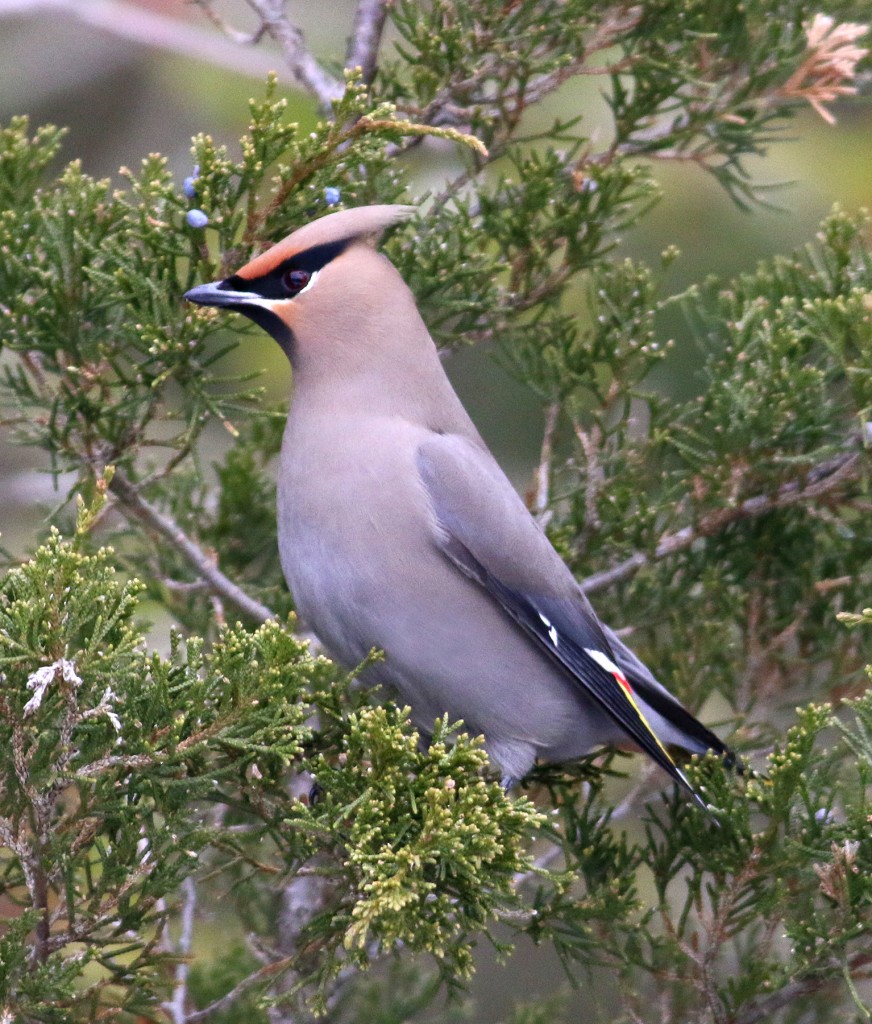
Here’s the photo that I’ve been waiting to get for the past eleven years. Welcome to the collection, Bohemian Waxwing. How would you describe this bird? Elegant? Regal? Either way, its photo bird #1,037.
So the strategy worked, with help from Kevin. Patience and persistence pay off, as they often do. And I finally have a Bohemian Waxwing photo again.
When I was in Florida last month, I described the pleasures of sorting through gull flocks on the beach, in shorts, with gulls so close that binocs were barely needed. Today I sampled sorting through gull flocks, northern-style, with parka, mittens, and scoping a distant flock. Here in New Jersey, one of the best locations to search for the rarer winter gulls is in the small parks alongside the Delaware River in Florence. This location is just upstream of a deep bend in the river, with a landfill on the Pennsylvania side. That combination is like catnip for gulls.
This was my first trip to Florence, with the main targets being Lesser Black-backed Gull and the two white-winged gulls: Iceland and Glaucous, all of which occur here annually, and which have been sighted recently. The only problem is that the weather here has been frigid, with a mix of snow and rain yesterday that froze overnight making for treacherous walking, and the temperatures only reached a high of 24 degrees with winds in the 15-20 mph range. Oh well, as they say, there’s no such thing as bad weather, just bad clothing, so I bundled up and went out, undaunted. (although I did end up taking one nasty spill, ending up horizontal in the parking lot)
When I arrived, the gulls were there in big numbers. Unfortunately, when I was at the upstream park, the gulls were primarily downstream, and when I drove to the downstream park…well, you can guess where they went. Eventually we got in synch and I found myself with a huge flock of gulls on the ice and floating down the river in front of me.
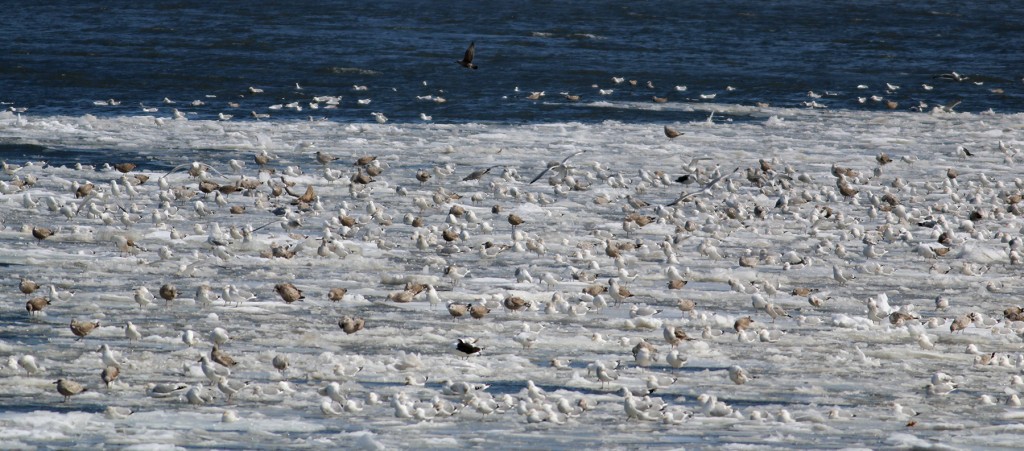
A portion of the main flock, consisting of thousands of Herring Gulls, hundreds of Great Black-backed Gulls, a smattering of Ring-billed Gulls, and a few ‘interesting’ gull needles mixed in this veritable white haystack.
Glaucous Gull is currently my birding nemesis; the Great White Gull for me has been The Invisible Gull. So I was particularly focused on finding birds with all-white wings and white-or-pale bodies. Gladly, I found one fairly quickly, but it turned out to be an Iceland Gull despite my best efforts to convert it to a Glaucous. Its pale appearance was obvious whether sitting on the ice or in flight, and at least this sighting confirmed that I can recognize white gulls.
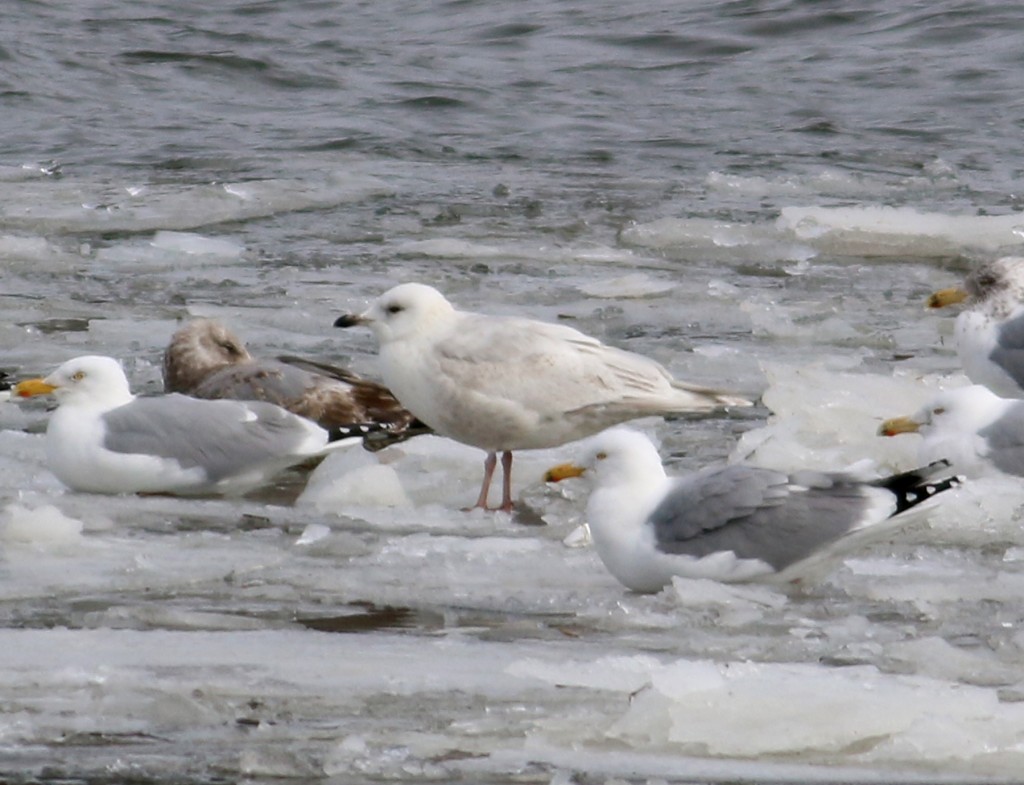
An Iceland Gull beside Herring Gulls for a good size comparison. Notice how the overall washed out appearance and pale wings are immediately apparent beside the grayer Herring Gulls.
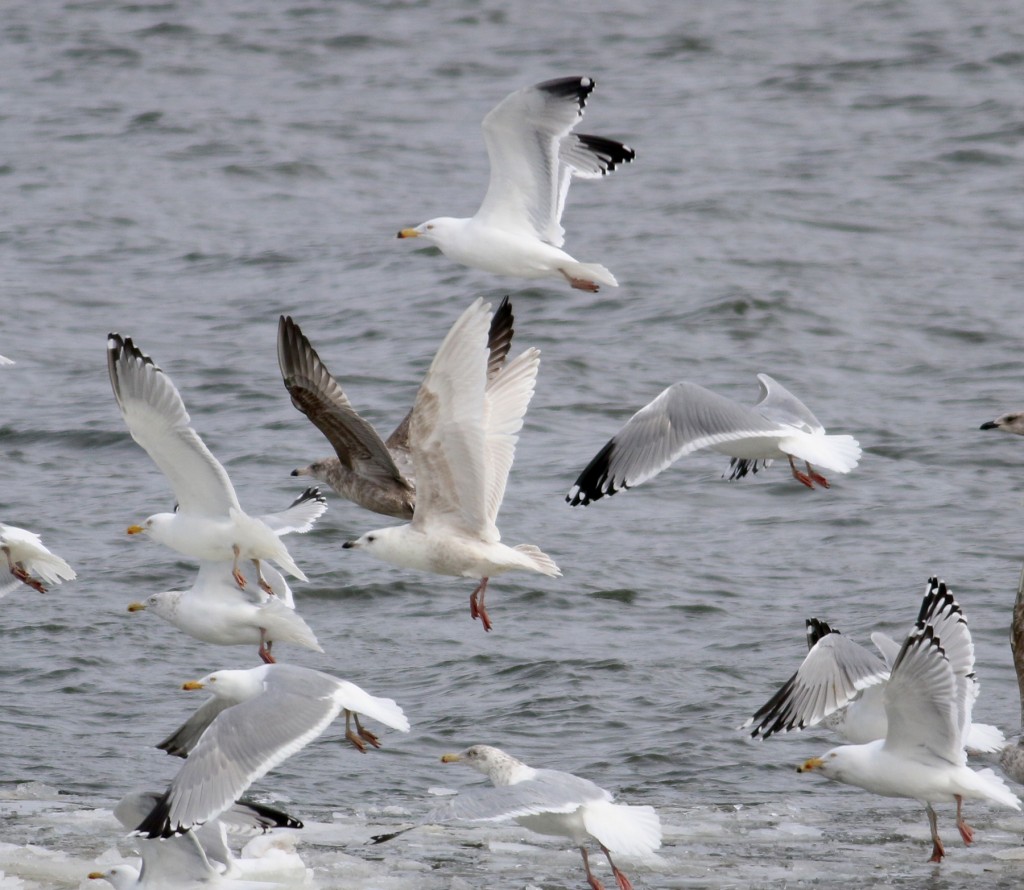
Iceland Gull in flight remains relatively conspicuous with its pale wingtips compared to the Herring Gulls that appear to have dipped their wingtips in black ink.
The vast majority of gulls present here were Herring Gulls, and I found it surprisingly easy to recognize adult Lesser Black-backed Gulls mixed in the flock. Their steely-gray body was intermediate between that of the more familiar Herring and Great Black-backed Gulls, as you can see in the photo below. The streaked head and smaller size than Herring Gulls confirmed the identification.
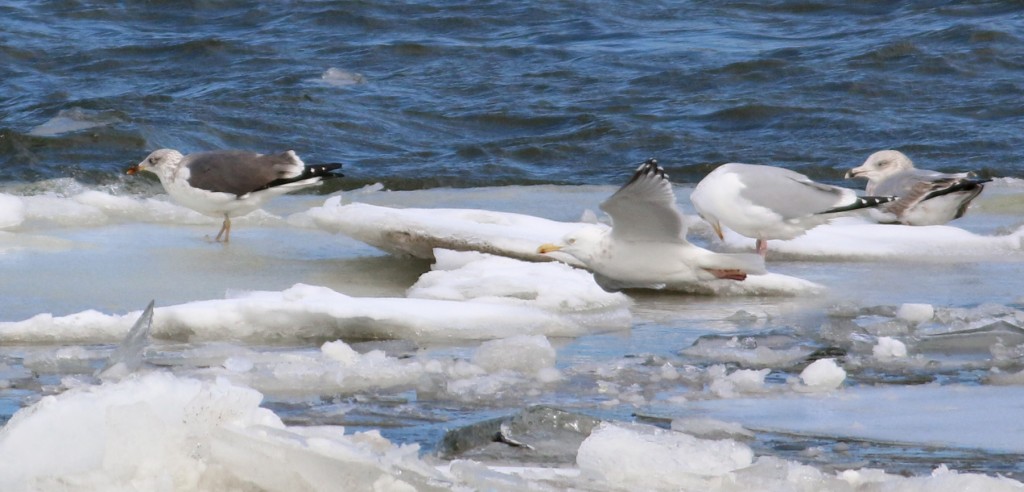
Here we have an adult Lesser Black-backed Gull in the company of three Herring Gulls. Note the steely-gray wing and streaked head, and slightly smaller size of the Lesser Black-backed Gull on the left, compared to the more familiar Herring Gulls.
Over the course of 2 1/2 hours I was able to spot 5 Lesser Black-backed and 7 Iceland Gulls, a successful day by any measure, since I don’t remember ever seeing more than singletons of either species in a single day previously. Glaucous Gull did not make an appearance, as expected for a worthy nemesis. There is still time for a return visit to Florence over the next month to search again before they depart for their northerly summer homes, preferably on a day without icy parking lots, and with warmer temps and less wind. I think I was spoiled by Florida-style gull watching.
Some days you have to trust your instincts. Yesterday I visited Manasquan Inlet and turned around almost immediately because, unexpectedly, vicious winds were pounding in from the northeast, busting surf all over the jetty. Today I was hoping that those winds might blow something exotic into the inlet, so I returned. There were many cars in the beach parking lot, so for a while I thought maybe I missed some rare bird alert. Turns out that the surf was still up, bringing a lot of these guys out:
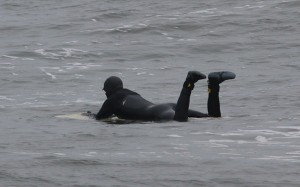
That’s not what I was looking for.
Although the waves were active, thankfully the jetty was clear. A quick look hinted that something was up, with 25 Common Loons visible within a small area within the inlet, and another 11 loons keeping a Red-necked Grebe company at the mouth of the inlet. I decided to head over towards the loons and get some photos for an upcoming presentation.
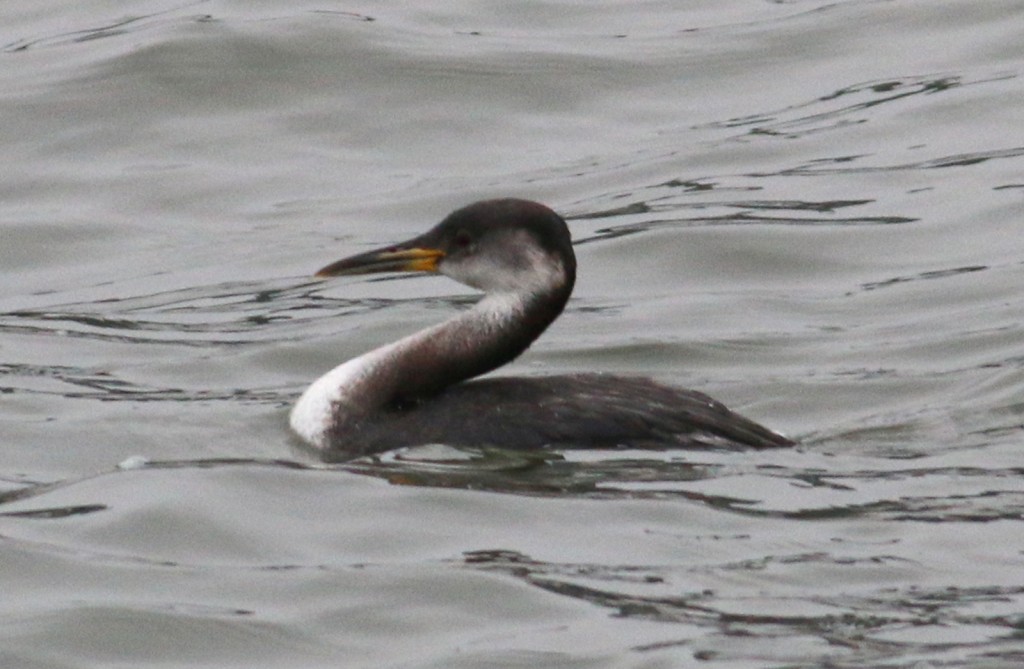
One of two Red-necked Grebes that I saw in the inlet today. This would be the highlight of most days, but not today. And look at the position of that neck!
As I was watching them, I noticed a smaller bird mixed in, and with a quick binocular look I knew it was something new. I haven’t yet seen any alcids in NJ, and this was an alcid. The bill was too small for a Razorbill, it was way too big for a Dovekie, and it was too dark for a Guillemot, so it had to be one of the murres. Time to break out the trusted Sibleys and see what we have. The dark face and relatively stubby bill confirmed that it was a Thick-billed Murre, a lifer for me.
I sent word out of the sighting, and followed the murre as it drifted along the inlet. It wasn’t feeding or diving, but simply drifted far inward as the first birders started arriving. After swimming back outward, it eventually took flight, landed near the end of the jetty, and a few minutes later was lost in the waves. The newly arriving birders drifting in were not happy with hearing that news. Thick-billed Murre is a review species here in New Jersey, and its always fun to find a review species. According to the NJ Bird Records Committee website, this species is not seen in NJ every year, yet a Thick-billed Murre was reported yesterday at Barnegat Light (where many other birders started out today), another was spotted in Absecon today, and yet another was found in Staten Island. Wow…when it rains, it pours.
I left for the day, and later heard that the bird was re-sighted in the inlet along with a second Thick-billed Murre, and a total of three Red-necked Grebes. It was a wild day at the inlet, and I expect it will be busy there again tomorrow despite incoming frigid weather.
Today we introduce a new series of quizzes, which I’m calling Pop BirdQuizzes.

Why? I’ve taken some photos lately that are ideal quiz subjects, but which I thought made an identification point that deserved a more extensive answer. So instead of simply incorporating the photo into one of the existing quizzes, I decided to experiment with a format where I provide the location and the time of year of the photo as clues, and then discuss the bird(s) more fully. Give it a try; start by clicking here or on the PopQuiz tab at the top of the page
It’s my favorite phrase when birding: “Geez, you don’t see that every day!”. Today I uttered it once again while biking to the local beach. As we often do while commuting, I was scanning the birds along the side of the road, on the fences, and on the power lines. For the most part it was the usual suspects:
Starlings:
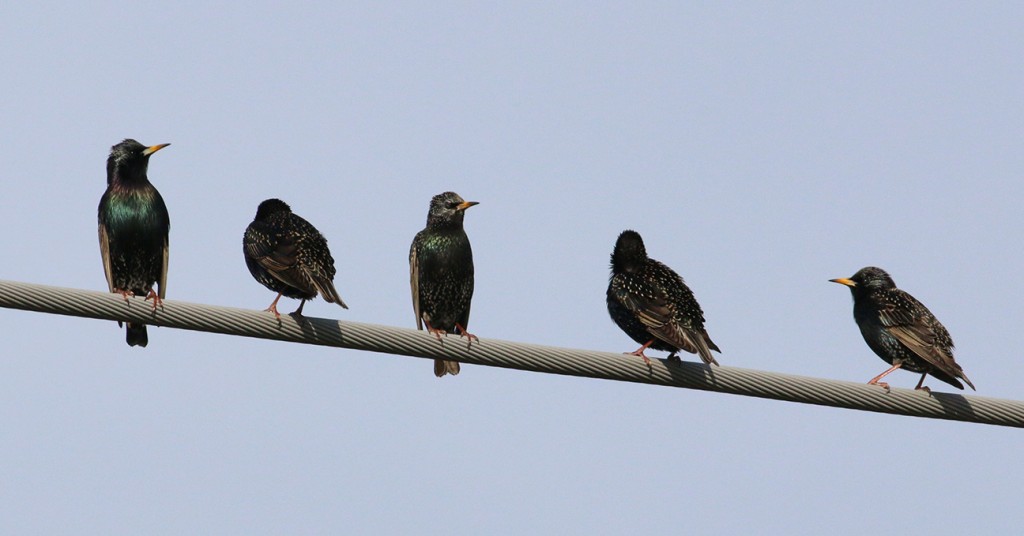
Mourning Doves:
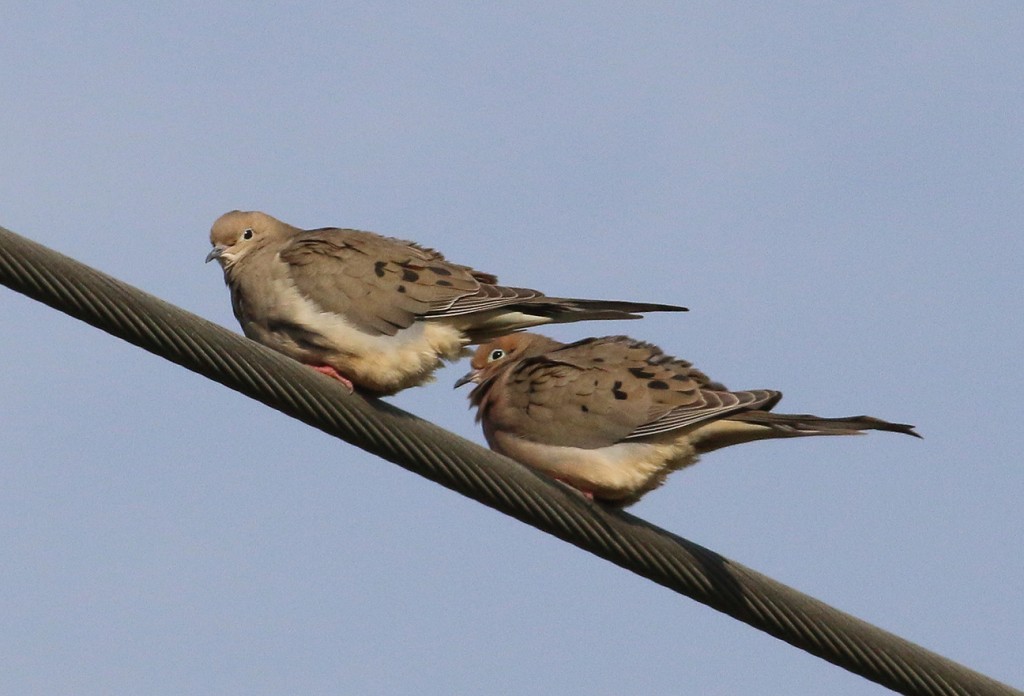
Fish Crows:
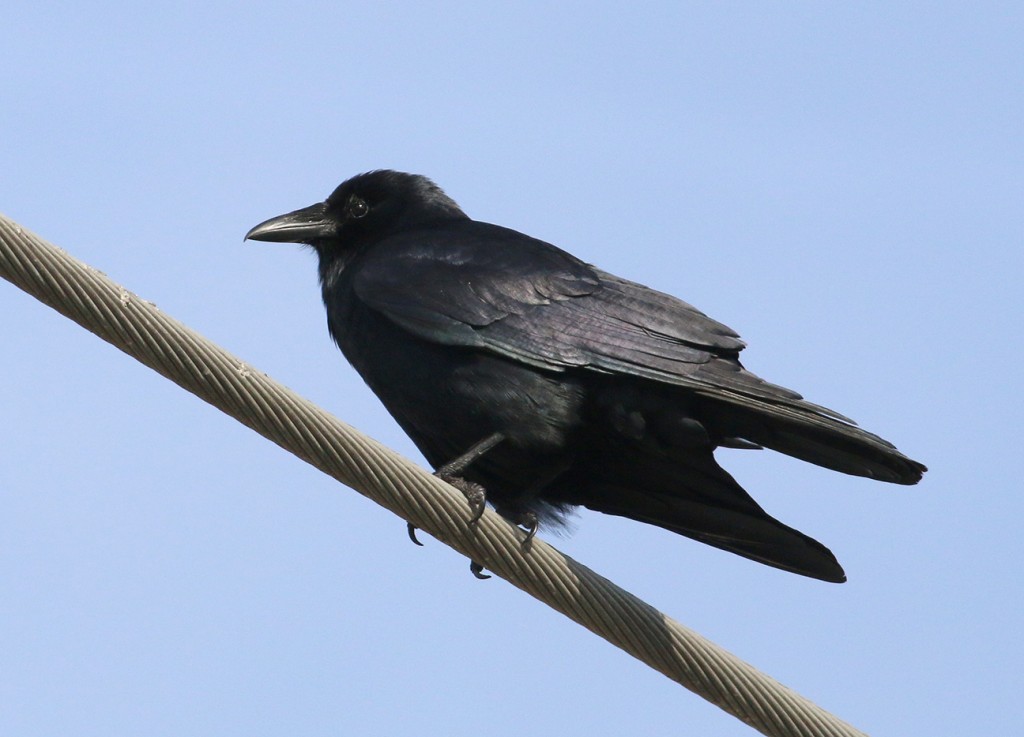
Mockingbirds:
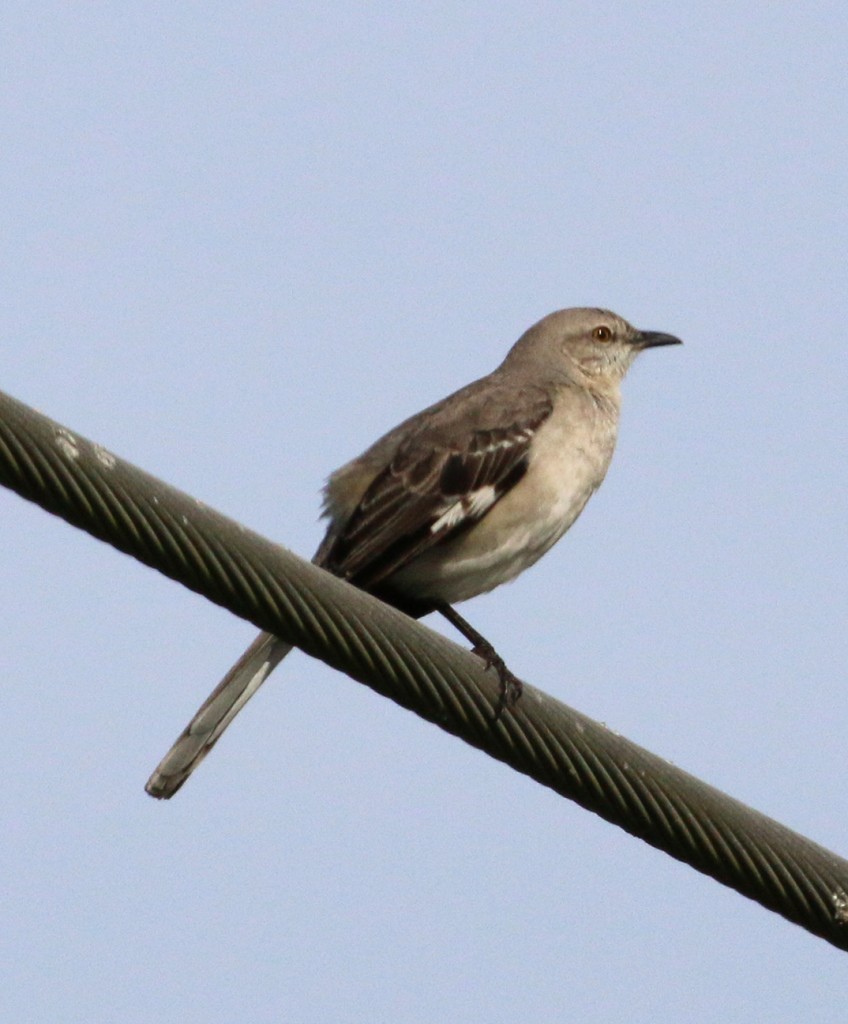
Grackles:
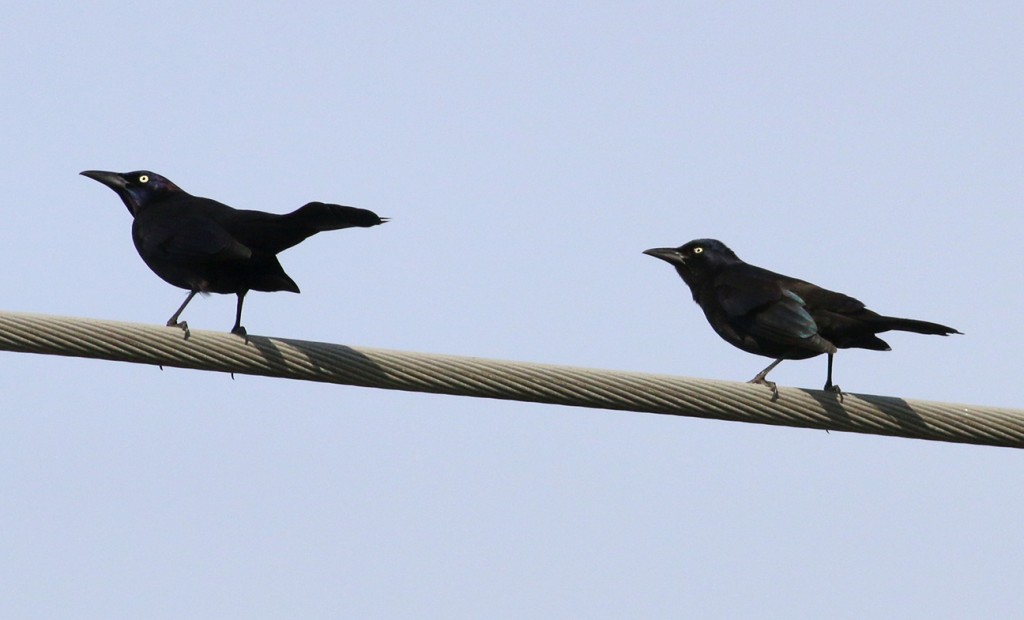
White Ibis:
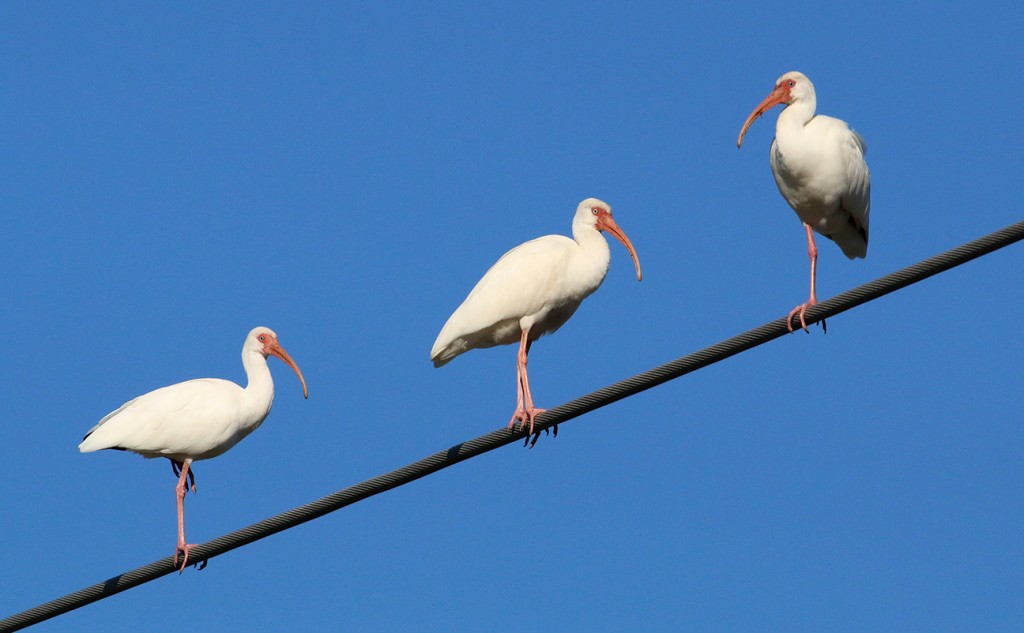
WHITE IBIS? On power lines? Geez, you don’t see that every day. At least not where I live.
Gulls typically are not the favorites of most birders; they certainly don’t seem to have the same widespread allure that owls or raptors or warblers have. If you meet anybody who truly enjoys sorting through gull flocks, then you know you are in the presence of a hard-core birder. So why is it that gulls often achieve least-favored status? For most birders, I suppose that it revolves around three issues. First, gulls present identification challenges, as they can take two or three years to achieve maturity, with different plumage patterns for each year. Second, finding the more interesting or desirable gulls has a bit of a needle-in-a-haystack feel, requiring sorting through a large flock to find something different. Third, at least where I live, the more interesting or desirable gulls arrive in winter and I’m not a fan of sorting through large distant flocks through a scope while shivering. Especially at places like landfills (=garbage dumps) where gulls tend to accumulate. Logically, I realize that the first two reasons are not very justifiable, as identification challenges and finding rarities are two aspects of advanced birding that make it such an enjoyable hobby, but hey, I’m not alone in these biases. During these past few weeks, however, I’ve found that studying gulls in Florida is quite enjoyable because cold weather is not an issue, and the gulls allow close approach on lovely beaches where even binocs often are not needed.
So today I thought that I’d share two of the interesting gulls that I’ve found over the past few days. A Franklin’s Gull has been making appearances at a local town beach located only five miles or so from where we are staying. As I’ve only seen Franklin’s Gulls once before, in Colorado, I thought that an early morning stop was worthwhile. When we arrived at the beach I was disappointed, since only two dozen or so gulls were present, and I expected much more. What were the odds that a Franklin’s would be in such a small flock? Well it turns out that we beat the odds, and here’s where the expertise of others came in handy. Franklin’s Gulls are difficult to distinguish from the much-more-common Laughing Gulls, with Franklin’s having a narrower bill and a more prominent white eye-ring. In the absence of knowing that a Franklin’s was appearing sporadically at this beach, I probably would have assumed that all of the darker-winged gulls were Laughing, and missed this rarity. (there’s a lesson embedded in here for us all!) But after sorting through the small flock carefully, a narrow-billed gull became apparent, especially in comparison with the accompanying Laughing Gulls. The dim early morning light allowed a diagnostic photo. To give an idea of its abundance, only two other Franklin’s Gulls have been reported on the east coast in eBird this year to date. My thanks go out to the fine birders who originally identified and reported this bird.
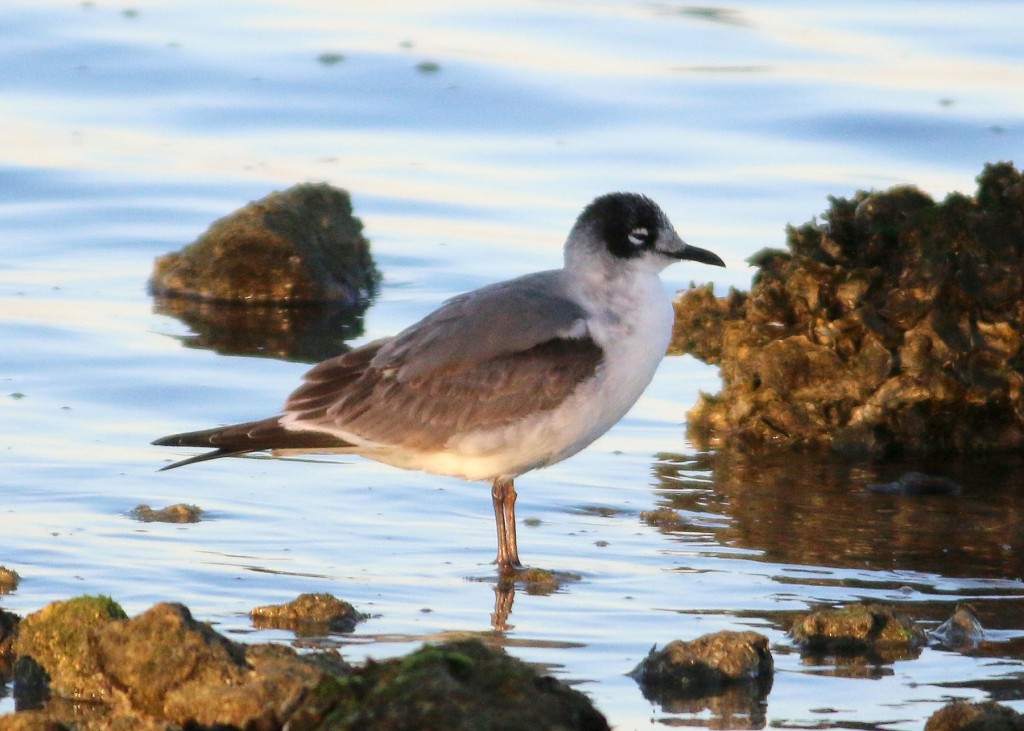
A Franklin’s Gull in winter plumage in early morning light. The narrower bill and more prominent white eye-ring are key identification points for distinguishing it from the similar Laughing Gull.
Two days later I was scanning through the gulls and terns at our local beach that I have been trying to visit daily. Every day the combination of shorebird, gull, and tern species present here is slightly different, and I have been hoping for a Sandwich Tern to make an appearance. After a quick scan and finding the usual suspects, I noticed an immature gull that was intermediate in size between the accompanying Laughing Gulls and Herring Gulls. There aren’t too many possibilities within that size range, and after consultation with my well-worn Sibley’s Guide, it became apparent that I was watching a first year Lesser Black-backed Gull. Although its not nearly as rare as Franklin’s Gull, this bird also was flagged as rare at this location in eBird. Maybe gulling can be fun after all. At least when the weather is this warm and the birds are this accommodating.